Today Suunto took one more step towards filling in their Wheel of Fortune naming scheme mystery series, by announcing the Suunto 5. The unit’s numerals are slotted a step above the Suunto 3, but gapped with the Suunto 9 a theoretical two rungs above it. Here, let me help you understand
Suunto 3: Budget fitness watch, no GPS
Suunto 5: This watch, mid-range multisport watch
[Naming Scheme Product Gap]
Suunto 9: Top-end multisport/outdoors watch
Make sense now?
In any event – naming semantics aside, the Suunto 5 is simply a Suunto 9 with a smaller battery, no compass, and no barometric altimeter. Seriously, that’s it (ok, it’s got a slightly lesser waterproof spec, but still solidly waterproofed). Actually, there are technically three other tiny itty bitty tweaks – and one of them favors the cheaper unit. But more on that later.
The Suunto 5 is a mostly well priced mid-range multisport watch. Swim, bike, run, hike, even triathlon multisport option. It can track your sleep and your HR 24×7, as well as follow routes from Suunto’s platform. It most directly competes with the Polar Vantage M and Garmin Instinct or Forerunner 245 from a pricing and features perspective. Of course, all of their differences we’ll dive into.
In any case, with that intro out of the way, let’s get digging on the new bits.
What’s new:
As I was saying, the Suunto 5 is basically just a mini Suunto 9 – and frankly, that’s a great thing. Sure, the Suunto 9 isn’t the most full featured watch out there compared to other options on the market at the same price. But…when you take that same feature set and slice the price in half…now we’re talking!
Thus no better place to talk about what’s new than a hands-on video. I give the quick explainer up front, and then we dive into some hands-on menu goodness to show you what the watch is all about. [Note: Depending on how soon you see this, YouTube is still processing the higher resolutions.]

But let’s circle back to doing some feature comparisons. The Suunto 5 is actually the successor to the $279 Suunto Spartan Trainer. It came out about two years ago and was essentially a mini Suunto Spartan. In other words, the mini-me Suunto 5 equal of the Suunto 9. Albeit, at $50 less. So, let’s look at how those two devices compare – assuming that’s the true predecessor. Here’s what the Suunto 5 has that the Suunto Spartan Trainer doesn’t:
– Increased battery life from 10hrs to 20hrs in regular modes, and 30hrs to 40hrs in extended modes
– Changed from plastic bezel (base option) to stainless steel bezel
– Changed from plastic screen (base option) to mineral glass
– Added adaptive training plans (not on Suunto 9, update: added Oct 2019)
– Added sleep quality metric (not on Suunto 9, update: added Oct 2019)
– Added stress tracking metric (not on Suunto 9, update: added Oct 2019)
– Added body resources metric (not on Suunto 9, update: added Oct 2019)
– Added VO2Max fitness level
– Changed GPS chipset from MediaTek to Sony
– Changed GPS recording track modes from Best/Good/OK to Best/Good
– Added additional GPS options: GLONASS, Galileo, and QZSS
– Added intelligent battery modes: Performance, Endurance, Custom
– Made the bezel appear slightly more swanky than the plasticky looking Spartan Trainer
– Slightly decreased temperature tolerances: –10°C to 50°C for Suunto 5 vs –20°C to 60°C for Suunto Trainer
– Approx. the same weight: 66g for Suunto 5, to 57g/66g/74g for Suunto Trainer variants
– Only can connect to Suunto/Sports Tracker platform/apps (not Movescount)
– It’s got a new square box. The first new structural box design for Suunto in like 30 years.
Effectively they’ve blended the FirstBeat physio type metrics from the Suunto 3 (stress, body resources, VO2Max tracking) with the new Suunto 9 GPS chipset related features (intelligent battery and tracking modes). The other tweaks are mostly cosmetic or downstream impacts from the previous two items. So in case you were wondering what the average of 3 and 9 are: It’s 5. No, not 6 – that’s being pedantic.
Still, let’s say you’re looking at the Suunto 9, what are you giving up by going for the Suunto 5?
– No barometric altimeter (in Suunto 9 Baro)
– No compass
– Lesser battery life: 20/40h vs 25/50/120hrs (depending on mode)
– No adjustable brightness level
– No touchscreen (buttons only)
– No access to legacy Movescount platform
On the flip side, the Suunto 5 has the following features the Suunto 9 doesn’t:
– Has stress tracking metrics
– Has body resources (aka body battery) metric
– Has sleep quality metrics
– Has V02Max tracking/metrics
– Has adaptive training plans
As I’ve said numerous times before – I simply don’t understand it when a company’s flagship product (Suunto 9) lacks features that a lesser product has. I don’t really even care ‘why’ that is (in this case, likely licensing driven since these are FirstBeat features). All it does is serve to frustrate the very buyers you want most: People who are buying the more expensive thing.
On the bright side, the Suunto 5 does have a new box. This is essentially the first time Suunto has changed the box designs for their watches in probably a decade. Apparently they finally ran out of the football field sized stash they must have had of the existing boxes (which just featured a swappable outer paper cover).
Oh – and one last thing. The Suunto 5 comes with the Suunto ‘Value Pack’, which is basically a bunch of free trials and stuff. The trials are generally better than what’s available on the open market in terms of length. My understanding is that by launch we’ll see a few more things pop-up as well.
Got all that? Good, let’s dive into the basics quickly. Again – I’ve kinda covered all of the features of this unit in other reviews, such as the Suunto 9 Baro or Suunto 3 in-depth reviews.
The Basics:
If you’re familiar with the Suunto 9, then you’ll be old hat at the Suunto 5. The additive difference here are the body battery and stress metrics. But before we get there, let’s start with the basics – here’s the main watch face. This is slightly customizable with half a dozen other options, though no 3rd party options are enabled.
From the main watch face you can press up/down (it’s not a touch screen), you can iterate through the different menu areas. Go upwards once to launch the workout menu and settings pages, or go down to access heath/training stat type pages. Here’s a quick gallery of some of those options:
Note that the Suunto 5 does have 24×7 HR tracking, however, it burns battery like nobody’s business. On average I’m finding 3% per hour (in non-workout mode). Which means in 24 hours you go through about 3/4ths the battery of the unit.
Let’s presume you want to do something like start a workout. Tap up once to exercise, and then again to select the sport you want.
You can customize the sports loaded onto the watch using the Suunto smartphone app. This includes the data fields on those pages (up to 7 per page). Here’s a quick gallery of some of those:
Somewhat frustratingly you can’t edit an existing default sport modes (like you could on Movescount). Instead, you have to create a new sport mode. C’mon…recycling, it’s the thing to do. Though, you can edit new sport modes you create.
Once you’ve got your data fields the way you like them on the sport you want, you can wait for GPS and HR to lock. In general this doesn’t take more than a few seconds assuming you’re in roughly the same place as the last time you used the watch. It doesn’t appear to use a GPS pre-cache file from the phone like some other companies do, so when I travelled back from Finland to Amsterdam, my next time outside it took quite a while (about 2-3 minutes) to find GPS. Or perhaps it does and it’s just not working yet on my unit.
This is also where you can toggle the different battery modes, and it’ll show you exactly how many hours are left for each mode:
Once that’s done you’re ready to start doing your swim/bike/run/hike/whatever sport. It’s more or less the same from this point. Here’s a few shots of what that looks like. I had some mid-run ones, but alas they didn’t come out awesome at all.
Once you’re done with the workout you can pause it, and then end the activity to view your summary stats. There’s a pile of pages it allows you to review:
From there the workout is synced to the Suunto app via Bluetooth Smart. You can then view the various stats on the mobile app. Note that this is sync’d to Suunto’s Sports Tracker platform, and not to Movescount. There’s no method to sync this watch to Movescount (a definite disadvantage compared to the Suunto 9).
This same workout is then available online on the Sports Tracker site (desktop):
If you’ve got Strava sync configured, it’ll also go ahead and send it over there as well automatically (unless the connection is on the fritz again, in which case, it won’t).
When it comes to routing, the Suunto 5 pulls exclusively from the Suunto app/Sports Tracker platform for routes. Meaning if you’ve got routes in the Movescount platform from past watches, you’re on your own to manually move those over (an entirely different discussion). Currently you can open .GPX files with the smartphone app, however, the company says that starting soon also be able to upload .FIT routes too.
In the meantime, you can manually draw those routes if you’d like to from the Suunto smartphone app. And – I will commend Suunto on this, it’s by far the best smartphone route builder I’ve seen from a manufacturer to date. Though admittedly, the pool is only two: Garmin and Suunto (Polar doesn’t offer a smartphone router builder). Garmin recently introduced theirs and somehow it’s horrible to use. But the Suunto one is exactly what it should be. Sure, I’d like a small elevation graph somewhere, but hey – that gives them something for down the road.
You can toggle sport modes and routing modes, as well as satellite vs heatmap (woot!) vs regular maps. Again, it just works like it should. Kinda like Easy Route, but with better map options (namely: heat maps).
From there it’ll sync to your watch upon the next sync. Just remember to sync it manually in case you need it right away. Back on the watch you can select it to get started routing.
Finally, turning directions back to some of the unique Suunto 5 things not found on the Suunto 9 we’ve first got the body resources. This is akin to Garmin’s body battery, as both these metrics are directly from FirstBeat. They show the exact same thing, just in slightly different ways and by different branding.
However, both Suunto and Garmin use the same term ‘stress’ to show the stress level. Suunto simplifies it to a single term, whereas Garmin shows both the single term as well as a bit more of a numeric identifier next to it. Either way, both the same FirstBeat licensed metric.
In addition within your completed workout summary, you’ll also get your VO2Max displayed:
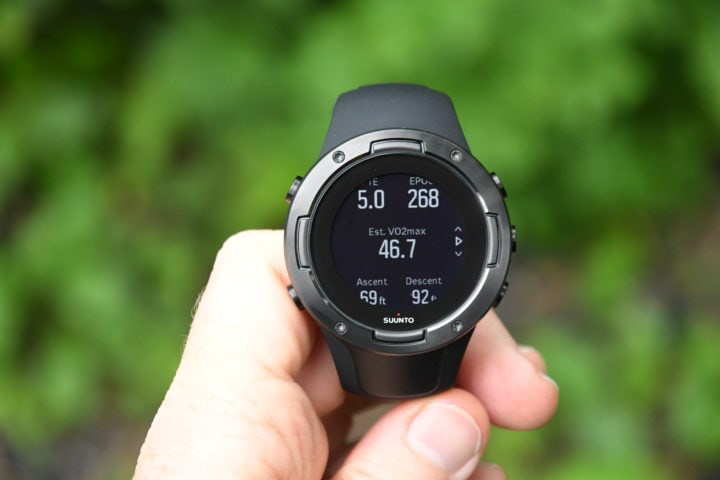
In my case, this is way below what it should be. Typically this value can take a few runs to even out, so I’ll give it a few more runs to see if it kicks itself into gear (I should be hovering between 57 and 62 – a broad tested range, but a better range than what this shows). Again, both Garmin and Suunto license the same module from FirstBeat. For that same run above I clocked in on the FR945 at 53 (still a bit low). Though in most cases it takes harder workouts than that run to get a good solid VO2Max estimate. All of this is also plotted and recorded within the new Suunto app.
Beyond that, all of the training related metrics are the same as the Suunto 9.
Meanwhile, back on the smartphone app, there are some improvements with respect to daily metrics on the way. The app should soon be showing 24×7 HR (including the daily avg/max values). Though at present I’m not quite seeing it yet. Though I do see steps/calories/sleep/workouts there, most of which were there before.
You can also, within the app, connect to 3rd party platforms and get your workouts synced to them:
With that, that’s the nickel tour of the watch. Again, down the road in a full in-depth review with more time and variation in workouts/sports/etc I’ll dive deeper into all the features and functions.
A Quick First Run Look:
With the basics covered, let’s head out for a quick run or two. One in Helsinki, another in Amsterdam. One through some cityscape, and the other a bit of forest. Neither crazy difficult, and neither with much altitude. We’ll start with the Helsinki one, since that one I’ve got it compared to the Garmin Forerunner 945. I typically like to have more than just one other comparison, but on this day my other watch battery died just short of the run. So, two it is.
Here’s the GPS track (and data set):
As you can see, it frankly looks near identical. This shouldn’t surprise too many people. Both companies are using the same Sony GPS chipset. Though obviously the companies differ in their implementation of it beyond the hardware itself. Even in the woods, there’s not much difference between the hard to see lines. Neither is perfect, but neither are super different either.
The HR however, that’s got a fair bit of difference – at least initially. The Suunto 5 struggled to lock HR in the first few minutes, showing me well above my actual HR:
However, once we got past that first few minutes, things calmed down and it matched both the FR945 and my perceived effort.
Next, a run on Sunday in Amsterdam. This one I had more watches with me. On the left wrist was the Suunto 5, while the right wrist had the COROS Vertix. Meanwhile, on the running stroller was the Garmin Forerunner 945 paired to an HRM-DUAL chest strap, and then a Polar Vantage V paired to an OH1+ upper arm optical sensor. Here’s that GPS track (and data set).
As you can see, the Suunto 5 did well. Only one minor quibble exiting the tunnel at the museum in the upper right, but it was only perhaps 5-7 meters off there briefly, whereas the COROS (beta) struggled a fair bit more there, as well as in the park in general. The Suunto also briefly went on a canal boat tour prior to entering the park, but it’s not super substantial. No meaningful differences between the Suunto/Polar/Garmin while in the park.
However, on the optical HR side we again see the Suunto (and COROS) really struggle the first 7-8 minutes:
And in fact, continue to struggle for most of the run. For this run I very purposefully only pushed the stroller with my right hand (the Suunto was in my left hand). So it shouldn’t have had any issues. But it’s a problem with accuracy I seem to be seeing with most of the new Suunto watches over the last year or so.
In any case, it’s still early times with the watch not due out for a few more weeks. So perhaps we’ll see some changes there too. Now, with the run done, we shift our attention to the platform itself.
With the Suunto 5, it’s fully tied (and only available on) the Sports Tracker driven Suunto site, it’s just super limited in comparison to the existing/legacy Movescount platform. I know I’ve talked about this numerous times, and each time I say more or less the same thing: Hopefully it’ll get better in 6-9 months. But here’s the thing: It mostly hasn’t.
Sure, the app has gotten better, but the underlying platform is still mostly a dumpster fire in comparison to Movescount. And I get it – all platforms have their flaws: Garmin’s Connect, Strava’s…well…Strava, Polar’s Flow, Suunto’s Movescount – everyone has things we don’t like. But hey – at least they have things we do like. And I struggle to find things I actually like about the Sports Tracker platform. I mean, I suppose that since it’s so limited in functionality I get back my time quickly and can move onto eating cookies again.
But some things are really much more problematic. For example, I wanted to analyze my run from yesterday and compare the HR data against three other devices. So I exported the .GPX file of the run and stashed it into the DCR Analyzer. Except, this is what I got for the HR plot:
Why? Well, because of a bug that’s been there a year now that incorrectly writes the HR timestamps to the .GPX file occasionally out of order. It’ll jump to 36, 38, 39, 36, 40, etc… There’s other bugs.
Another is that when I tried to manually import last Monday’s workout to Strava (since it wasn’t setup initially as an autosync partner), it showed my run taking 97 minutes (it was only an hour run):
Now, Suunto says they’re working to address these bugs. And in the case of the export issues, they’re somewhat going to entirely sidestep it – starting in June the platform will allow exporting .FIT files – which is the modern way of writing this day to exportable fitness files (that the rest of the industry uses). Of course that’s also important because it allows more proper export of things like running power too. In order to test this, Suunto offered to manually export both my runs using the new service so I can do my analysis. Sure enough, once I had them, the .FIT files were just as I’d expect.
Which doesn’t mean the runs HR data was accurate (as you saw above) – but rather, the data was just correct. The GPS data was fine.
I bring this up mostly because I don’t entirely think Suunto understands why this really matters. Sure, for the Suunto 3 they kinda got away with it because it was a watch aimed at a different crowd. But with the Suunto 5 that changes. They’re competing against legit platforms of Polar Flow and Garmin Connect. Love ‘em or hate ‘em, they’re a heck of a lot better than the non-Movescount platform Suunto is pushing now. And that’s going to be a real legit problem going into the future.
Product Comparison:
Picking and choosing which devices you want to compare the Suunto 5 to is a funny exercise, as it depends on entirely which side of the equation you’re coming from. For example, consider this:
Runner: Best compared to Garmin Forerunner 245 or Polar Vantage M, or COROS PACE
Triathlete: Best compared to Garmin Forerunner 735XT, Polar Vantage M, or COROS APEX/PACE
Hiking/Outdoors: Best compared to Garmin Instinct, Polar Vantage M, or COROS APEX
I suppose it’s really the Garmin side of the house that shifts depending on what you want to do with it.
In any case, below is the complete product comparison chart. Remember though you can build your own comparison chart here in the product comparison tool – which is honestly your best bet in this case. Sure, I could add like 6 columns here, but then it looks like someone threw a container of pudding at a ceiling fan.
| Function/Feature | Suunto 5 | Suunto 9 Baro | Garmin Instinct | Polar Vantage M | COROS APEX |
|---|---|---|---|---|---|
| Copyright DC Rainmaker - Updated July 11th, 2023 @ 3:06 am New Window | |||||
| Price | $329 | $599 (non-baro is $499) | $299 | $279 | $299 (42mm), $349 (46mm) |
| Product Announcement Date | May 21st, 2019 | June 5th, 2018 | Oct 11th, 2018 | Sept 13th, 2018 | Nov 2018 |
| Actual Availability/Shipping Date | Early June 2019 | June 26th, 2018 | October 2018 | November 2018 | Nov 2018 |
| GPS Recording Functionality | Yes | Yes | Yes | Yes | Yes |
| Data Transfer | USB & Bluetooth Smart | USB & Bluetooth Smart | USB, BLUETOOTH SMART | USB, BLUETOOTH SMART | Bluetooth Smart (smartphone) |
| Waterproofing | Yes - 50m | Yes - 100m | 100 meters | Yes - 30m | 100m |
| Battery Life (GPS) | Up to 40 hours | Up to 120 Hours | Up to 16 hours GPS (40hrs in UltraTrac) | Up to 30 hours | 25hr (42mm), 35hr (46mm), up to 100hrs UltraMax |
| Recording Interval | Variable | Variable | 1s or Smart Recording | 1s | 1-second |
| Alerts | Sound/Visual/Vibrate | Sound/Visual/Vibrate | Vibrate/Visual/Audio | Vibrate/Visual | Audio/Visual/Vibration |
| Backlight Greatness | Good | Great | Great | Great | Great |
| Ability to download custom apps to unit/device | No | No | No | No | No |
| Acts as daily activity monitor (steps, etc...) | Yes | Yes | Yes | Yes | Yes | Music | Suunto 5 | Suunto 9 Baro | Garmin Instinct | Polar Vantage M | COROS APEX |
| Can control phone music | No | No | Yes | No | No |
| Has music storage and playback | No | No | No | No | No |
| Streaming Services | No | No | N/A | No | N/A | Payments | Suunto 5 | Suunto 9 Baro | Garmin Instinct | Polar Vantage M | COROS APEX |
| Contactless-NFC Payments | No | No | No | No | No | Connectivity | Suunto 5 | Suunto 9 Baro | Garmin Instinct | Polar Vantage M | COROS APEX |
| Bluetooth Smart to Phone Uploading | Yes | Yes | Yes | Yes | Yes |
| Phone Notifications to unit (i.e. texts/calls/etc...) | Yes | Yes | Yes | Feb 2019 | Yes |
| Live Tracking (streaming location to website) | No | No | Yes | No | No |
| Group tracking | No | No | No | No | No |
| Emergency/SOS Message Notification (from watch to contacts) | No | No | No | No | No |
| Built-in cellular chip (no phone required) | No | No | No | No | No | Cycling | Suunto 5 | Suunto 9 Baro | Garmin Instinct | Polar Vantage M | COROS APEX |
| Designed for cycling | Yes | Yes | Yes | Yes | Yes |
| Power Meter Capable | Yes | Yes | No | Yes | Yes |
| Power Meter Configuration/Calibration Options | Yes | Yes | N/A | Yes | No |
| Power Meter TSS/NP/IF | No | No | N/A | No | NP only |
| Speed/Cadence Sensor Capable | Yes | Yes | Yes | Yes | Yes |
| Strava segments live on device | No | No | No | Future Update (Date TBD) | No |
| Crash detection | No | No | No | No | No | Running | Suunto 5 | Suunto 9 Baro | Garmin Instinct | Polar Vantage M | COROS APEX |
| Designed for running | Yes | Yes | Yes | Yes | Yes |
| Footpod Capable (For treadmills) | Yes | Yes | Yes | Yes | No |
| Running Dynamics (vertical oscillation, ground contact time, etc...) | No | No | No | No | Yes |
| Running Power | With extra sensor | With extra sensor | No | Yes with 3rd party devices (not built-in like Vantage V) | Yes |
| VO2Max Estimation | Yes | Yes | No | Yes | Yes |
| Race Predictor | No | No | No | No | No |
| Recovery Advisor | Yes | Yes | No | No | Yes |
| Run/Walk Mode | No | No | Yes | No | No |
| Track Recognition Mode | No | Yes | Swimming | Suunto 5 | Suunto 9 Baro | Garmin Instinct | Polar Vantage M | COROS APEX |
| Designed for swimming | Yes | Yes | Yes | Yes | Yes |
| Openwater swimming mode | Yes | Yes | Yes | Yes | Yes |
| Lap/Indoor Distance Tracking | Yes | Yes | Yes | Yes | Yes |
| Record HR underwater | Yes | Yes | No | Yes | Yes |
| Openwater Metrics (Stroke/etc.) | Yes | Yes | Yes | Yes | Yes |
| Indoor Metrics (Stroke/etc.) | Yes | Yes | Yes | Yes | Yes |
| Indoor Drill Mode | No | No | No | No | Via Drill Log |
| Indoor auto-pause feature | No | No | No | Yes | - |
| Change pool size | Yes | Yes | Yes | Yes | Yes |
| Indoor Min/Max Pool Lengths | 15m/y to 1,200m/y | 15m/y to 1,200m/y | 14M/15Y TO 150Y/M | 20M/Y to 250 m/y | 15y/m-300y/m |
| Ability to customize data fields | yes | yes | Yes | Yes | Yes |
| Captures per length data - indoors | Yes | Yes | Yes | Yes | |
| Indoor Alerts | No | No | Yes | N/A | Yes | Triathlon | Suunto 5 | Suunto 9 Baro | Garmin Instinct | Polar Vantage M | COROS APEX |
| Designed for triathlon | Yes | Yes | No | Yes | Yes |
| Multisport mode | Yes | Yes | No | Yes | Yes | Workouts | Suunto 5 | Suunto 9 Baro | Garmin Instinct | Polar Vantage M | COROS APEX |
| Create/Follow custom workouts | No | No | Yes | Yes | Yes |
| On-unit interval Feature | Yes | Yes | Yes | No | Yes |
| Training Calendar Functionality | Yes | Yes | Yes | No | Yes | Functions | Suunto 5 | Suunto 9 Baro | Garmin Instinct | Polar Vantage M | COROS APEX |
| Auto Start/Stop | No | No | Yes | Yes | |
| Virtual Partner Feature | No | No | Yes | No (but can give out of zone alerts) | No |
| Virtual Racer Feature | No | No | No | No | No |
| Records PR's - Personal Records (diff than history) | No | No | Yes | No | No |
| Tidal Tables (Tide Information) | No | No | No | No | No |
| Weather Display (live data) | No | No | Yes | No | No | Navigate | Suunto 5 | Suunto 9 Baro | Garmin Instinct | Polar Vantage M | COROS APEX |
| Follow GPS Track (Courses/Waypoints) | Yes | Yes | Yes | No | Yes |
| Markers/Waypoint Direction | Yes | Yes | Yes | No | Yes |
| Routable/Visual Maps (like car GPS) | No | No | No | No | No |
| Back to start | Yes | Yes | YEs | Feb 2019 | Yes |
| Impromptu Round Trip Route Creation | No | No | No | No | No |
| Download courses/routes from phone to unit | Yes | Yes | Yes | No | Yes | Sensors | Suunto 5 | Suunto 9 Baro | Garmin Instinct | Polar Vantage M | COROS APEX |
| Altimeter Type | GPS | Barometric | Barometric | GPS | Barometric |
| Compass Type | N/A | Magnetic | Magnetic | N/A | Magnetic |
| Optical Heart Rate Sensor internally | Yes | Yes | Yes | Yes | Yes |
| SpO2 (aka Pulse Oximetry) | No | No | No | No | No |
| ECG Functionality | No | ||||
| Heart Rate Strap Compatible | Yes | Yes | Yes | Yes | Yes |
| ANT+ Heart Rate Strap Capable | No | No | YEs | No | Yes |
| ANT+ Speed/Cadence Capable | No | No | Yes | No | Yes |
| ANT+ Footpod Capable | No | No | Yes | No | Yes |
| ANT+ Power Meter Capable | No | No | No | No | Yes |
| ANT+ Lighting Control | No | No | No | No | No |
| ANT+ Bike Radar Integration | No | No | No | No | No |
| ANT+ Trainer Control (FE-C) | No | No | No | No | FTMS (Bluetooth) only |
| ANT+ Remote Control | No | No | No (Yes for VIRB camera control) | No | No |
| ANT+ eBike Compatibility | No | No | No | No | No |
| ANT+ Gear Shifting (i.e. SRAM ETAP) | No | No | No | No | No |
| Shimano Di2 Shifting | No | No | No | No | No |
| Bluetooth Smart HR Strap Capable | Yes | Yes | YEs | Yes | Yes |
| Bluetooth Smart Speed/Cadence Capable | YEs | YEs | Yes | Yes | Yes |
| Bluetooth Smart Footpod Capable | Yes | Yes | Yes | Yes | Yes |
| Bluetooth Smart Power Meter Capable | Yes | Yes | No | Yes | nO |
| Temp Recording (internal sensor) | No | Yes | Yes | Yes | Yes |
| Temp Recording (external sensor) | No | No | Yes | No | No | Software | Suunto 5 | Suunto 9 Baro | Garmin Instinct | Polar Vantage M | COROS APEX |
| PC Application | PC/Mac | PC/Mac | Garmin Express | Polar Flowsync - Windows/Mac | No |
| Web Application | Suunto Sports Tracker Platform | Suunto Movescount | Garmin Connect | Polar Flow | No |
| Phone App | iOS /Android | iOS /Android | iOS/Android/Windows | iOS/Android | iOS/Android |
| Ability to Export Settings | No | No | No | No | No | Purchase | Suunto 5 | Suunto 9 Baro | Garmin Instinct | Polar Vantage M | COROS APEX |
| Amazon | Link | Link | Link | Link | Link |
| Backcountry.com | Link | Link | Link | Link | |
| Competitive Cyclist | Link | Link | Link | ||
| REI | Link | Link | Link | Link | DCRainmaker | Suunto 5 | Suunto 9 Baro | Garmin Instinct | Polar Vantage M | COROS APEX |
| Review Link | Link | Link | Link | Link | Link |
Again, don’t forget you can make your own comparison charts in the product comparison tool here.
Wrap-Up:
It’s funny, long-time readers will know that the singular Suunto watch that I frequently run with is the Suunto Spartan Trainer, often using it as a reference unit. The reasons are somewhat two-fold. First, I like the small form factor – and in general it puts down good GPS tracks (mainly because of the satellite ‘bump’). And second – it’s without question Suunto’s best-priced unit in a long time. At $279, it is/was spot-on. I’m a big fan of well priced mid-market GPS units.
So it won’t take too much creativity to realize that the Suunto 5 basically takes that unit, adds a handful of things and continues the lineage (and thus in general my support for it). The Suunto 5 is launching at $329, which is some $50 higher than the previous unit. However, this model includes a stainless steel bezel and mineral glass display (some Spartan Trainer models also had that, but at a higher price). One could argue perhaps not offering a lower priced plastic model to match the plastic Polar Vantage M at $279 might be a slight mistake. Just like they could argue that matching the Garmin Instinct at $299 (also plastic) might also be a slight pricing test. But I think that people wanting this watch will get it whether it’s $270, $299 or $329.
From a GPS accuracy standpoint, initial testing is looking pretty good. This is using the Sony GPS chipset that everyone else is using, but more uniquely has the external satellite bump – which does increase GPS accuracy in most scenarios. Of course, it also decreases comfort and aesthetics. I guess nothing in life is free. For HR accuracy, it seems to continue to be a mixed bag. A trend I saw start on the Suunto 3 and has continued through the Suunto 9 to Suunto 5. I don’t know why.
Ultimately though I think that the Suunto 5 should be a pretty good option within the multisport market, especially for someone not super fussed about a barometric altimeter or a bunch of super running focused metrics. More to come down the road in a full review after Suunto starts shipping (which is slated for the first week of June).
Found this Useful? Support the site!
Found This Post Useful? Support The Site!
Hopefully you found this review/post useful. At the end of the day, I’m an athlete just like you looking for the most detail possible on a new purchase – so my review is written from the standpoint of how I used the device. The reviews generally take a lot of hours to put together, so it’s a fair bit of work (and labor of love). As you probably noticed by looking below, I also take time to answer all the questions posted in the comments – and there’s quite a bit of detail in there as well.
If you're shopping for the Suunto 5 or any other accessory items, please consider using the affiliate links below! As an Amazon Associate I earn from qualifying purchases. It doesn’t cost you anything extra, but your purchases help support this website a lot.
And finally, here’s a handy list of accessories that work well with the Suunto watches. Given the unit pairs with standard Bluetooth Smart sensors, you can use just about anything though. I'd recommend the Garmin bike sensors over the Wahoo ones, merely because the Garmin have two concurrent Bluetooth channels versus one for the Wahoo RPM/SPEED sensors.
And of course – you can always sign-up to be a DCR Supporter! That gets you an ad-free DCR, access to the DCR Quarantine Corner video series packed with behind the scenes tidbits...and it also makes you awesome. And being awesome is what it’s all about!
Thanks for reading! And as always, feel free to post comments or questions in the comments section below, I’ll be happy to try and answer them as quickly as possible. And lastly, if you felt this review was useful – I always appreciate feedback in the comments below. Thanks!





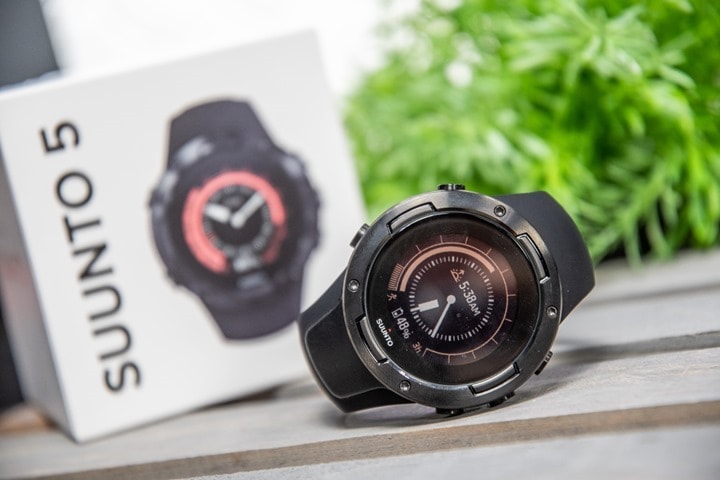
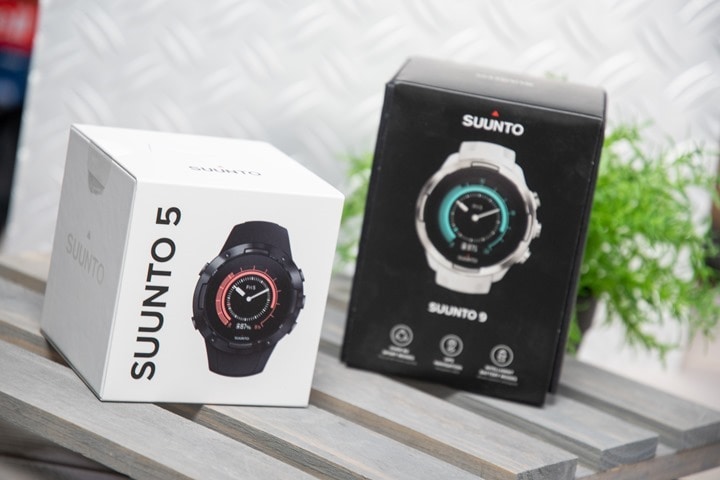
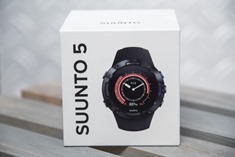
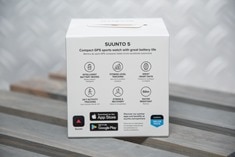
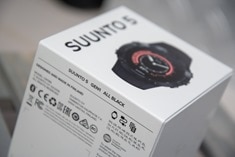


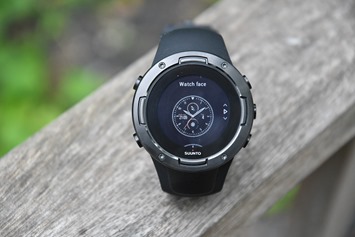
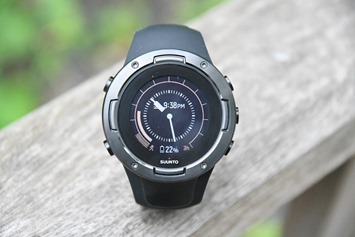

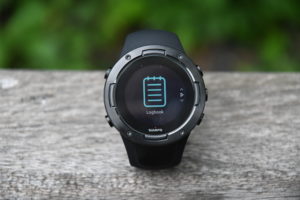

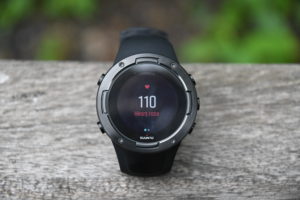
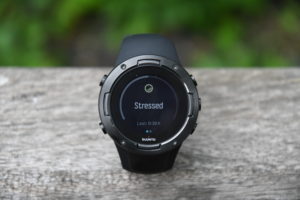
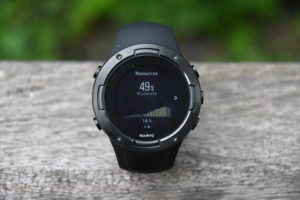

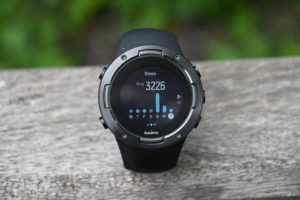
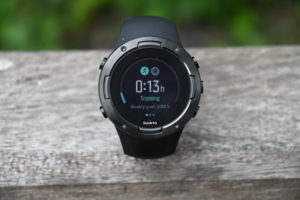
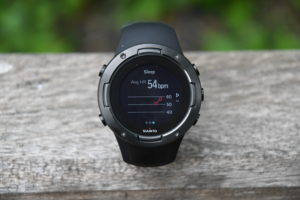
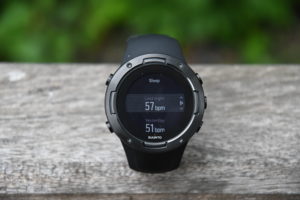
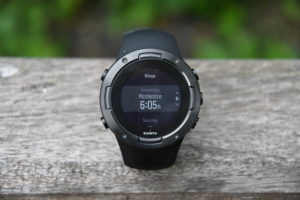
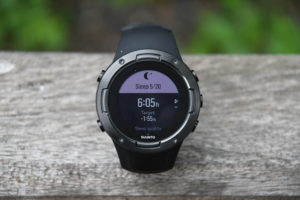
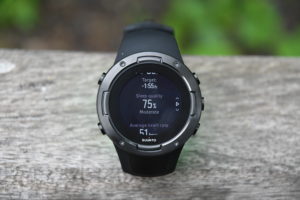
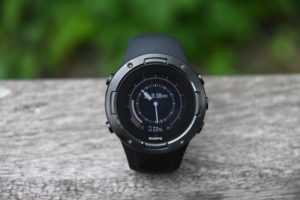
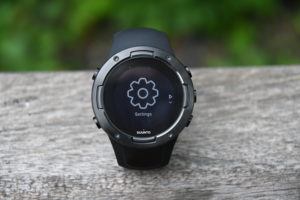
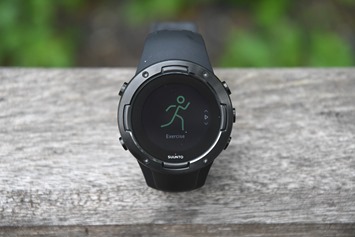
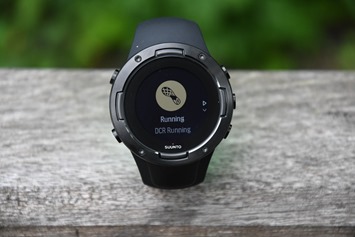
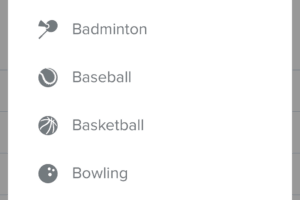
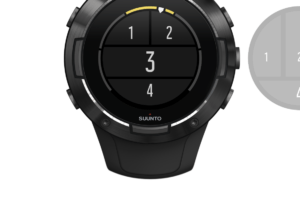

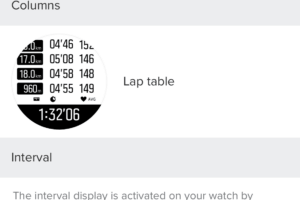
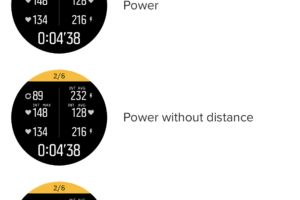
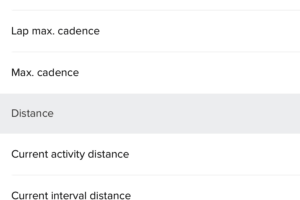
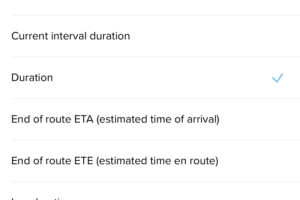
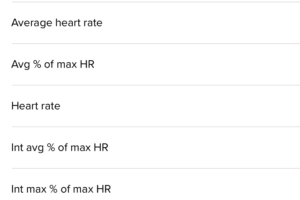

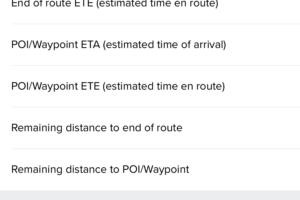

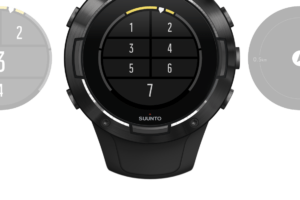
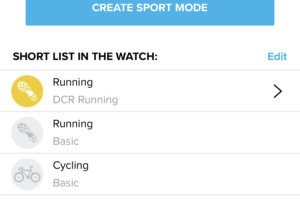

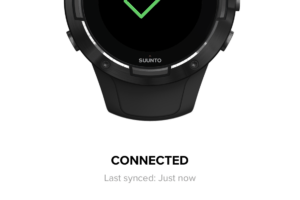
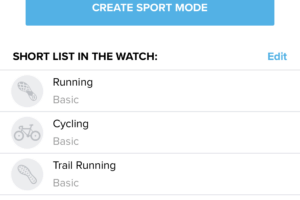

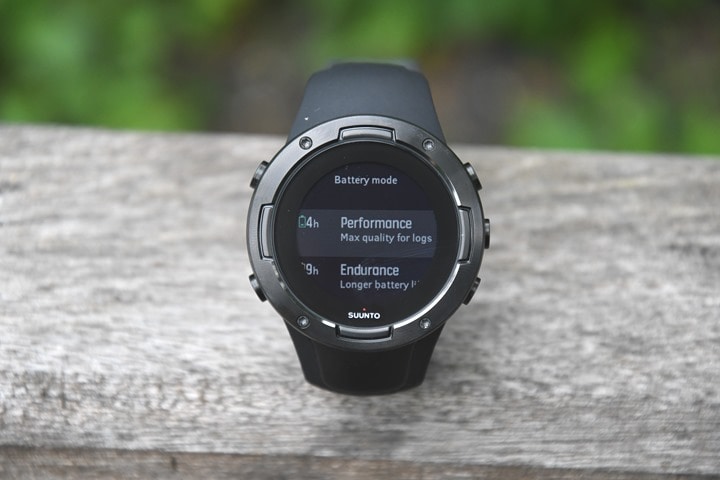

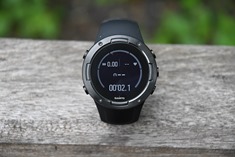

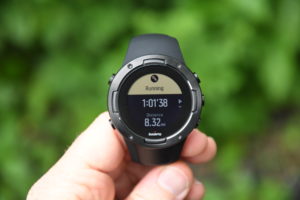
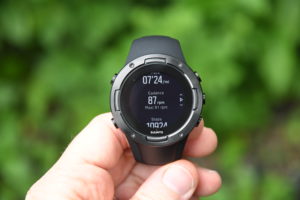
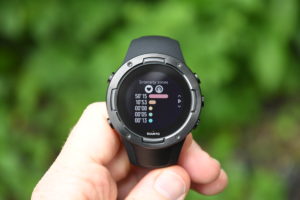

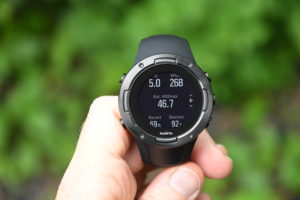
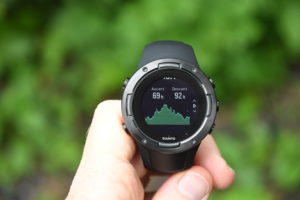
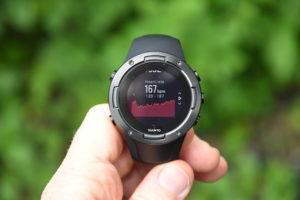
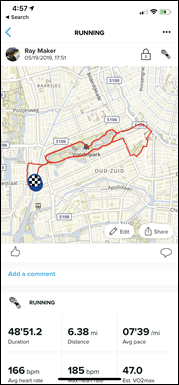

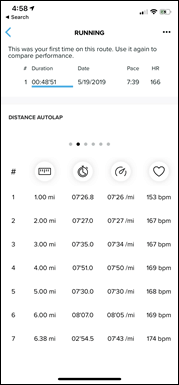
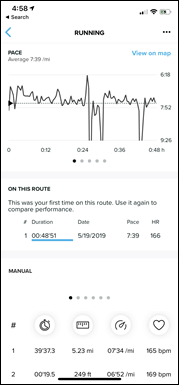

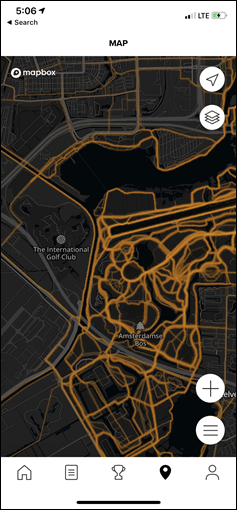
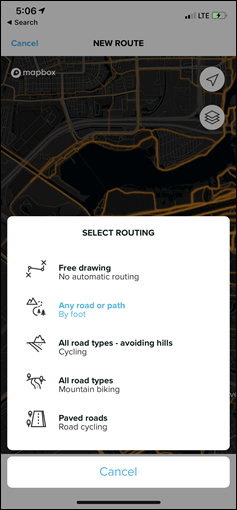
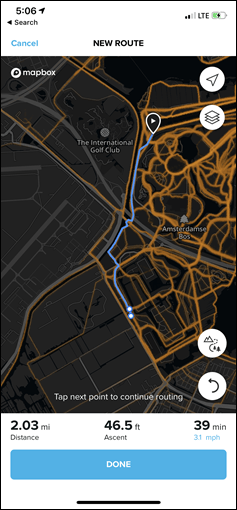
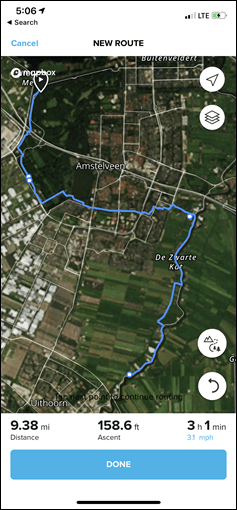

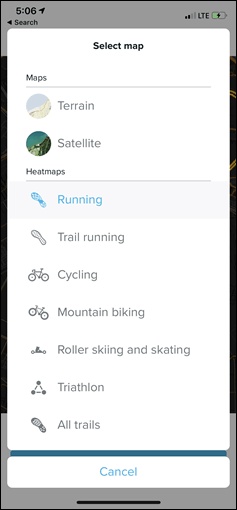

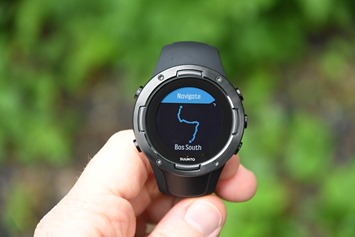
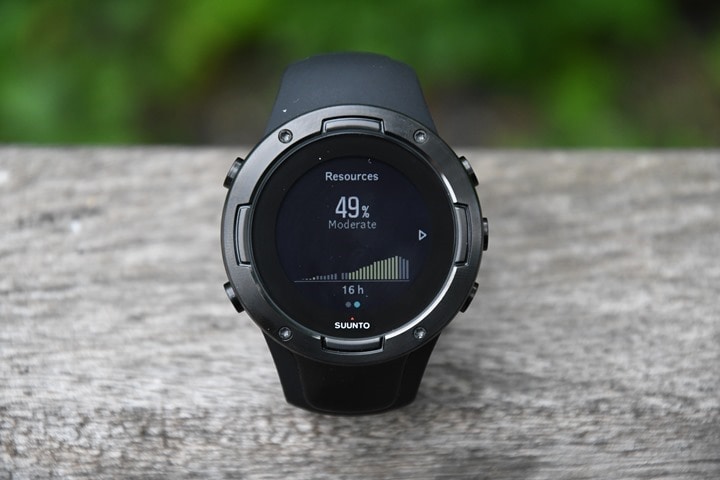


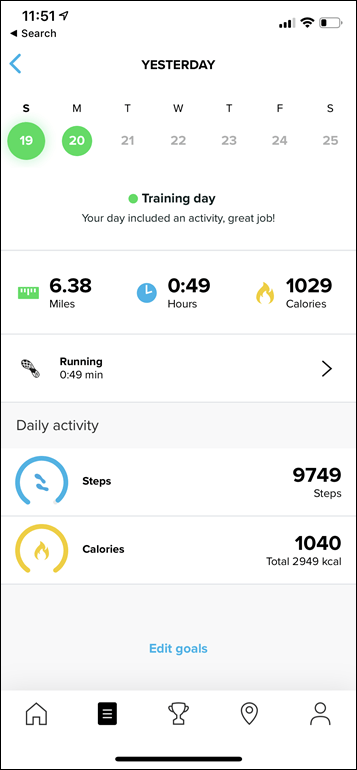
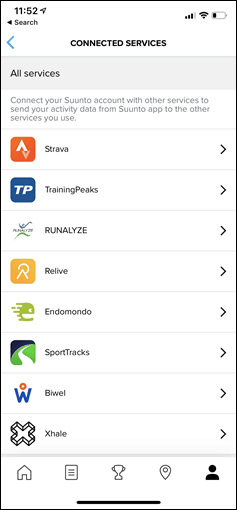











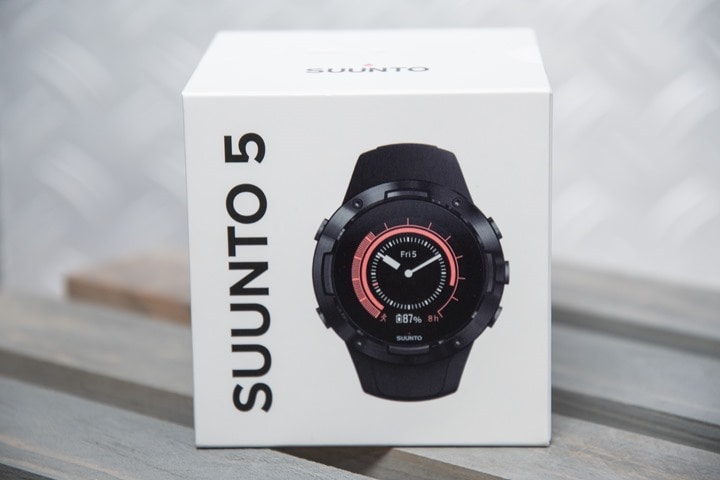
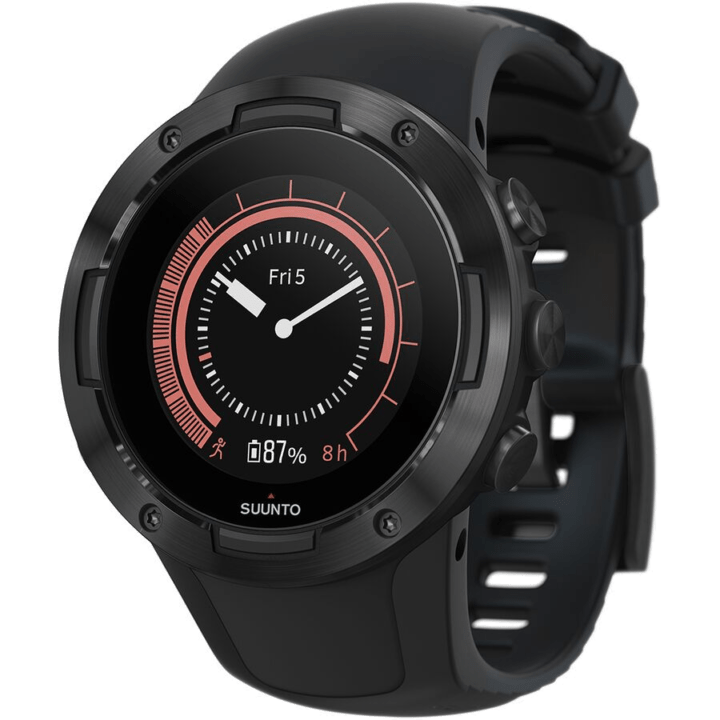
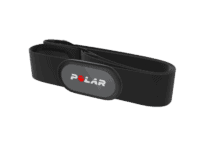
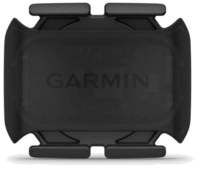
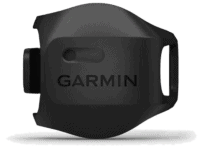

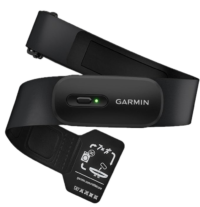

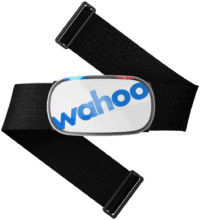





















I think you’ve got the wrong picture under the text “In addition within your completed workout summary, you’ll also get your VO2Max displayed”, as it doesn’t show the VO2Max reading.
Thanks! Without question not yet enough coffee this morning. Fixed!
Thanx for the introduction. Any thoughts on adaptive training plans comparing to Polar/Garmin plans ? Have they been changed/improved since Suunto 3 ? Looking forward to full review.
There’s no change that I’m aware of here. So…kinda super basic.
Just out of curiosity.. why don’t you like adaptive training plans on Suunto 3?
Hi Ray,
I have a doubt. When you say “the company says that starting soon you’ll at least be able to open up .GPX/.FIT/TCX files and then create routes using the smartphone app” it’s a bit confusing. I regularly import .gpx files to SuuntoApp, to use the route on the watch – are you referring to something else than route import here?
Thanks!
Sorry, I meant expanding into those other file formats beyond .GPX. I’ll clarify.
Hi Ray, thanks for the initial review. Can you tell me if the Suunto 5 will support triathlon mode for a pool swim (as opposed to OW) ? This is my biggest gripe about the Spartan Trainer.
Not that I can see. Though, while I can start a pre-canned multi-sport triathlon session on the unit manually via the convoluted ‘other’ option, I can’t seem to add it as custom sport using the smartphone app. The specs sheets I have say that I should be able to do that. Might just be a beta app bug.
Hey Ray just for future reference I made an app that can give you the fit file from the Suunto app
link to quantified-self.io try that and paste a Suunto app link to get the fit file.
P.S. I do work for AmerSports and have contact with Suunto so please note that. However, the app I linked is my home project and it’s not affiliated. Just a heads up.
Awesome – that’s sweet. Will give it a whirl on my workouts later today!
Another interesting reviewing Ray but I am not seeing anything specific about the GNSS bump?
So they are now taking Galileo, GLONASS and QZSS in additon to GPS for GNSS? I thought Garmin was ding the same on there old chipset and on the Sony one? I not they not covering BeiDou for the chinese market but are covering the Japenese market, interesting.
I know calling GNSS “GPS” is like calling all vacuum cleaners “Hoover” but for clarity it is the correct terminology.
Yeah, the bump is there. I thought I called it out here – but perhaps it was just in my video (still finishing editing it). It takes that bump from the older Suunto units.
True on GNSS vs GPS, but that’s honestly not a fight I’m going to try and fight. GPS terminology is confusing enough without adding in a term that by and large is used by almost nobody. Correct though on adding Galileo/GLONASS/QZSS (+ base GPS). Though to my knowledge it’s not yet enabled on my unit (the Galileo option for example).
Fair one.
Sorry I must have missed an explanation on what that bump meant. I shall hang on for that video.
Cheers Ray
Oh, but the Suunto 9 is so much better looking! Half of the appeal of the 9 is the fact that it is a great looking watch! With the 7 data field screen, can you even read it while running? Not with my old eyes!
Any idea if those Firstbeat’s features would come to Suunto 9 as a update? As I assume it’s not a hardware restriction, only apply the software and algorithms behind it.
Nothing planned at the moment. As note though, I think that’s kinda silly.
I also find it silly. Garmin did update the Fenix with new functionality. a 300 euro watch has more function that a 600!
No, Garmin is also not updating the Fenix 5 Plus with the new Firstbeat features found in the F945 or Marq.. So same problem here. Kinda sucks on botch ends..
Hello Ray, thanks for the review,
Just a silly question, but I’m curious: does the Timer mode have lap capability?
In S9 it doesn’t… Along with those other things you mention that are present on midrange S5 but not on top end S9…
#suuntoyouredoingitwrong
No timer lap on my unit (just tried it).
I’m amazed Suunto hasn’t been able to fix the first minutes of oHR issue. It seems a cadence lock problem (in my SST, which I returned, it happened only with running activities. Never while swimming or biking…).
“Triathlete: Best compared to Garmin Forerunner 745XT, Polar Vantage M, or COROS APEX/PACE”
Is that a mistake on the 745XT part or is there something in the oven we don’t know about yet? ;)
Haha…no, nothing in the oven that I know of. Just my mind so stuck on 45’s lately: 945, 245, 45. Fixed!
When you’ve tried the Strava import of “Hello Helsinki” was a manual import from sports tracker or automatic sync from suunto app ?
Manual. Normally you’d do automatic, though I’d argue the exports should be exactly equal in what they sent.
I thought so. It is a known problem. Of course this does not happen with automatic synchronization, neither from MC nor from suunto app, try to do a test.
Let me tell you that maybe it should be indicated in the review. Thus stated, it could be understood that it is a general problem of imports on Strava.
I’ll clarify – though, I think my point holds that it shouldn’t be the dumpster fire it is. I can’t begin to count the number of ways and issues we’ve had with file exports from Suunto over the years (and to this day). It’s super frustrating. It should just work. This isn’t rocket science (and especially not the super basic .GPX file format they’re using).
I’m with you, it should just works, and lately there has been some service interruption, but hey, shit happens.
Suunto App –> Strava works and the problem you mentioned is typical of a manual export that has always been discouraged, and with the download of the FIT file from Suunto App it will be resolved.
I repeat, for the only purpose of making your good review more truthful, I think you should better specify.
Greetings ;-)
Suunto 7 Baro arriving shortly afterwards ;-)?
I am using a Suunto Spartan Ultra, when I started using the route builder in the Suunto app I lost the capability to sync data to Movescount (they warn you about this). I would be surprised if Suunto 9 allows you to sync data to Movescount after importing routes to the watch.
Hi Ray,
Thanks for the heads-up and look forward to the full review!
Quick question – do you get the impression this is actually much of a step forward / improvement from the Spartan Sport watches? I’m looking for a watch at c.£250 budget, (primarily for trail running, plus bits of cycling/swim – not triathlon), and find myself caught up between newer, run specific models (say a Garmin 245 or maybe stretch to a 645) and an older Spartan Sport HR which I could bag for £225. The Spartan seemed to get so-so reviews but at that price perhaps seems a decent shout despite its age? Wondering whether improved battery life and a couple of years of development really is worth the extra cash to wait for a ‘5’ – or whether I bite the bullet and go to Garmin. Ta!
I would suggest that the 645 is a bit of a dead end when it comes to current crop of watches. Sadly I bought one at Xmas and I may well have waited until now if I thought it had known about the 245. That’s the problem with not knowing what’s round the corner! Also the 645 is quite laggy, especially in comparison to my vivoactive HR I had before. Over time I suspect the 645 may come to be the watch that time forgot.
I do however like Garmin pay and music so that’s something. That said I suspect the 245 ultimately might have served me better.
Cheers for the response Pete. The thing that attracted me potentially to a 645 was the Baro altimeter – being that a lot of my use will be in the hills. That said, reading around there seems a fair bit of unhappiness with its accuracy – and it would be equivalent price to the Suunto 5. Presumably a future Suunto ‘7’ will be a Baro enabled 5 – but then will be out of my price range.
I would suggest that the 645 is a bit of a dead end when it comes to current crop of watches. Sadly I bought one at Xmas and I may well have waited until now if I thought it had known about the 245. That’s the problem with not knowing what’s round the corner! Also the 645 is quite laggy, especially in comparison to my vivoactive HR I had before. Over time I suspect the 645 may come to be the watch that time forgot.
I do however like Garmin pay and music so that’s something. That said I suspect the 245 ultimately might have served me better.
which operations do you find slow on 645? I have it and I can’t be happier. It could be faster, but for starting my runs is fast enough.
For me moving between screens is often slow and also saving an activity takes way longer than it did on my vivoactive HR. It’s not a reason to return it, but I was expecting more. It just feels like a device that is trying to do too much and getting to the edge of its capabilities
I had the same experience with the 645, but for me the unforgivable sin was that it lagged on laps! I’d hit a lap while running and it would register ten seconds later. If a sports watch can’t get that right, it’s worse than a 30-lap Timex Ironman. That’s the one thing a sports watch has to do right.
Yes I’d forgotten about that one as I don’t often use laps, but yes it can happen.
Does it store more than one sensor of each type?
I’ve just sold my Suunto 9, I really wanted to love it but after trying to do a Duathlon with it and it not finding my power meter after the first run, it just didn’t do what I needed it to.
I don’t need all the features a Garmin offers, I just need a few basics done right.
Suunto 3, Suunto 5, Suunto 9, where is the Suunto 7 ?
Will be released together with the Suunto 11
I don’t know for certain, but I’d question this rock in the disappearance.
How does the screen brightness of the Suunto 5 compare to the Spartan Trainer?
I’d be interested to know this as well. I had to return the Spartan Trainer because the display was too dim for middle-aged eyes to make out on the move when the sun was above the horizon.
(I now have a Spartan Sport which I find perfectly legible.)
Not having them side by side at this very second, they seemed about the same time to me. I’ll double-check in the morning when back at the office.
Here’s a photo side by side of the Suunto Trainer vs Suunto 5, in terms of screen brightness. Both with backlight set to off.
Hi
Have you ever compared VO2 max Calculations from watches of different manufacturers? How to this values compare to each other and to laboratory test results?
I keep tabs on it. I find that when I do legit structured workouts designed for VO2 increases, and have at least two weeks of them – it does get pretty close to my measured results.
56 with Suunto
58 with Lab test
Hi Ray, are you expecting any feedback from Suunto about the battery drain for 24/7 heart rate? At 3% an hour this feature is basically useless…
For the most part, it hasn’t changed much since it was first introduced a few years ago. I presume that’s the expected behavior.
I turned it off tonight – it wasn’t super useful in its current implementation anyway, and since it’s basically just a all-day battery blowtorch, no reason to keep it on.
Thanks, that’s a shame. I like the look and functionality of this watch but I’d find it difficult to move over from Garmin and lose the all day/resting HR tracking.
Hi Ray, is 24/7 heart rate function actually collecting values every second or once per hour ? What do you mean it is not super useful at the moment ?
it’s should be activated every 15mins
It’s not very useful due to these points:
* Suunto APP doesn’t provide 24H HR history, it’s only has lowest and average.
* the OHR accuracy is a huge joke, it shows 120 BPM when I was pooping, if you want a good accuracy, you should push it into your wrist and hold 30s or more….
* Suunto (9) has no more analysis it’s not useful if we only get a number.
* Actually your feeling is better than Suunto’s OHR…
Cheers
Yup, would agree with exactly these points (I thought it was every 10mins, but same basic concept).
Shouldn’t SA get 24h HR history soon with updates? Regarding bad OHR accuracy, do you think it is hardware (Valencell) related problem or just software implementation? Did you try to change watch position on the wrist to get better results ? Thanks for feedback.
The update coming gives the daily history graph (helpful), but still only shows avg/max, which isn’t helpful. For 24×7 history to be really helpful, you’re ideally tracking RHR instead over time. That’s where the power come from (more on that here: link to dcrainmaker.com)
As for accuracy, I’m not certain. Valencell delivers good sensor packages, but I just haven’t had luck lately with Suunto products and the latest versions. I’ve tried multiple watch positions and perfect tightness/etc…No luck.
Thanx for detailed explanation. What about Forerunner and Vantage series, do they manage to track RHR over time in a better more efficient way? Suunto Spartan Sport WHR has problems with tracking HR in exercise mode or when checking current HR on the watch when functions are activated. After couple of minutes it seems the watch catches better values, at least this works for me for exercise mode. I always enter exercise mode for running 5-10 minutes before actual start.
I recently got a Suunto 3 Fitness to play around with. I have found the Suunto 3 Fitness HR is way off, I even compared it to my Schosch Rythm 24 (Same HR guts I think). I am glad I am not the only one who has seen that.
“but I just haven’t had luck lately with Suunto products and the latest versions. I’ve tried multiple watch positions and perfect tightness/etc…No luck.”
Wow, if we need luck these days to have HR data, all this technology for what then ???
I have bought an S9 back in Sept 2018 and was super excited for the OHR sensor (especially when I read that they chose a Valencell sensor!)….until I tried to use it. It’s garbage to be polite. I have caucasian skin, no tatoos, hardly any hair and it display more than my Max HR at all times.
I have contacted the Suunto support numerous time (and that in itself is already an endurance sport ha!) and they gave me this link : link to suunto.com
I tried everything but have abandoned since nothing worked. HUGE disappointment to have to have a watch with an OHR sensor that doesn’t work.
I wish they would offer all their current watches with the option to choose with an OHR and without. It would save me money, weight and headache.
That might be last Suunto watch I buy (not just because of that but for many other reasons) even though I’ve owned Suunto for the last 10 years.
The GPS specs for the S9 (as listed on Suunto’s website) do not list Galileo support. The S5 includes Galileo support in the specs. Does the S5 have a better/improved Sony chipset vs the S9? Or will Galileo support also be coming to the S9 via a firmware update? Also interested in the brightness of the backlight question. Old eyes.
It’s the same chipset. I suspect we’ll see the S9 get it as well, though I’ll circle back with Suunto and get clarity there.
You mention this for Data Transfer : Data Transfer USB & Bluetooth Smart
How do you transfer data from the Watch through USB ? Isn’t the watch syncable only through the Suunto App ?
Or does Suunto still offer sync options with the SuuntoLink App ?
I do a lot of training on the treadmill. Does this watch link with a footpod?
Comparison chart says yes,
From the pictures it appears that the analog watch Face is very small and uses only a little part of the middle of the screen. Is that right? I always use an analog face an the Garmin one seems to be bigger and use the screen real estate better
All I can say is the screen on my Suunto trainer which appears to be the same 218×218 is poor compared to the fr630 and abysmal against the fr645. But I still run with it on non structured workouts, native power and good distance accuracy stop me from ebay’ing it. Might buy the 5 if the offer customized versions. Black band with copper bezel would make me splash the cash
Hi Ray,
Does 5 support FUSEDTRACK?
Yes.
No, it doesn’t. It doesn’t have a compass, so it cannot use FusedTrack. That’s still exclusively on the Suunto 9.
That’s a nice watch. Suunto has executed well here. I would strongly consider that ahead of the Forerunner 645 if I was buying now (but I’m not, I bought the 645 a year ago — and it’s excellent).
That’s a very big bezel though. Looks to me like less than half the area of the front of the watch is screen. The 645 has a thin bezel, which is very nice.
I realize opinions differ, but I really think that Suunto has great screens compared to Garmin. When I had a Suunto Trainer (returned because the HRM was always locked on cadence for me), I was struck by how much more modern the higher resolution screen looked. Obviously screen quality in true sports watches is limited by the need for excellent battery performance, but I wish Garmin could step up their game just slightly. The screens just look so pixelated.
After recently purchasing a Suunto 9, and then, straight out of the box, not being able to pair it to the Suunto app, I was told by Suunto tech support that my phone is incompatible with Suunto software and I should wait for Suunto to update it’s software. I have a Samsung S8, hardly an anomaly. So instead of taking my $500 and putting it in a drawer until Suunto updates it’s software, I returned it. Can I assume that I’m going to have the exact same issue with the Suunto 5? Is Garmin now my only option? Blow is the message I received from Suunto tech:
“Hi forest. Our team has looked into your case about pairing issue and it looks like the reason suunto app is not pairing is because of compatibility issue. They suggested to wait for a software update on Suunto app for this to be addressed.//Mark”
Hi, I have Suunto 9 and Samsung S8. The Suunto app is working ok since the day I purchased the watch (about 2 months ago).
Same old Suunto, I owned a ambit run for precisely 1 day, wouldn’t pair to any of the 4 phones we had in the house. My Spartan trainer works fine. I know comparability for Android is harder than it is for the handful of iOS devices, nonetheless I’ve never personally had issues with Polar or Garmin with any brand of phone. They need to employ more developers, so to do Polar so fixes/updates might take two weeks instead of two months or more
Is it possible to rebroadcast the heartrate measured by the optical heartrate monitor (through bluetooth or ANT+)? Could not find that info in your text or in the table.
No re-broadcasting on Suunto devices.
would this unit replace your Suunto Trainer ? or would you want for the next iteration ?
Not yet, for the mere reason that I have serious issues with the Suunto app/platform, so for me, the singular use for my Suunto Trainer is GPS testing/accuracy – and exporting from Movescount as a .FIT file. Unfortunately, I can’t do that today.
That said – i do see it likely I’ll swap out that unit for the 5 at some point, just not today.
I have the Spartan Sport Baro WHR. A constant source of frustration for me is when you create a customized sport you’ve lost the ability to create intervals in the sport. I would like to make it easier to see the 3 items I’m most interested in while in the interval pain cave. Suunto support tells me they are working on it. Has this been fixed in the Suunto 5?
Hi Marshal,
I am lucky owner of SSSWHR Baro and using ONLY customized sports modes. Of course, with intervals in it. The trick is that you need to add at least one Interval display in your sport mode. Then you will be able to enable and use intervals in your sport mode.
BR,
Radovan
Thank Radovan, I’m not sure what I’m doing wrong then. I have created customized sports modes and added some interval fields, some take, but some say (invalid) when entered — such as interval number. In no case does the option interval appear in the option menu accessible below the Start button.
Regards,
Marshall
Thank Radovan, I’m not sure what I’m doing wrong then. I have created customized sports modes and added some interval fields, some take, but some say (invalid) when entered — such as interval number. In no case does the option interval appear in the option menu accessible below the Start button.
Regards,
Marshall
Thank you Radovan, I’m not sure what I’m doing wrong then. I have created customized sports modes and added some interval fields, some take, but some say (invalid) when entered — such as interval number. In no case does the option interval appear in the option menu accessible below the Start button.
Regards,
Marshall
Hi Marshall, it’s not only about adding interval field in some display. You really need to go down to the Interval section, when selecting a completely new display and choose one of the five interval displays. Then on another display, you can edit your own display with interval fields up to your needs. Of course, you are loosing one of four displays which can be used for customized sport mode. It’s a bit silly, but that’s how it is. Once you are done, you can enable intervals for your sport on the watch. Hope it’s clear now and it helps you.
BR,
Radovan
One of the PREDEFINED intervals display, I should have say….
Got it. Thanks so very much. You just eliminated a huge source of frustration for me. I’ve been a Suunto user since 1982. I was considering switching to Garmin for this and several other issues like lost connectivity to FirstBeat Sports.
Glad to help (:
Hi! Does the watch have the option for displaying altitude during activity? So not vertical speed or elevation difference, but raw altitude. E.g. standing on Mont Blanc displays cca. 4.696 m during live activity. I’m aware the watch has just GPS altimeter. Thanks for the answer.
Trainer had that option and I believe that S5 has it as well. But keep in mind please that this is GPS altitude only, as S5 has no BARO. Which means, you’ll see it only when the GPS accuracy is set to BEST. As soon as you change the GPS accuracy to anything lower, Altitude will not be shown.
I’m aware of that, so it’s all clear now. Thank you, your answer helps a lot.
P.S. I accidentally submitted the wrong elevation of Mont Blanc (it’s cca. 4.808 m), which I can not forgive myself (even though is not important for question itself). :D
(:
Glad to help!
PMSL with the cookie comment!
But seriously – what are Suunto thinking of with Sportstracker? It has to dramatically improve to make it a fit substitute for Movescount, however imperfect the latter is. It also has to exist as a web app and not just a mobile phone app. There isn’t much time left for its development and development is so slow. It is tempting to imagine you can cut costs by not developing a watch ecosystem but this misses the point as it adds so much value. Polar’s old hardware is mediocre (the new stuff is terrible) but Polar Flow with support for phased zonal training, a calendar of daily workouts on the device and (the old) recovery metrics are really good. Garmin can achieve this with third party sites such as Trainingpeaks (at a cost) and recently workouts are now synchronised to GC and the device, though not as seamlessly as for Polar.
Suunto have just not bothered with structured training (limited but present on the Ambit series). Adaptive training guidance is certainly interesting but I do not believe it a substitute to structured training plans but rather an overall guide. I note the Garmin 945 now provides an overview of training types too.
I had a Trainer but gave it to my son because I couldn’t read the display. Is this any bigger, brighter or clearer? It certainly looks quite nice. My 935 is no beauty but it works so well that I keep going back to it and my other watches have either been given to my children or gather dust and annoy my other half.
Hi Ray, Great review as always, comparing the Suunto 5 and the Suunto Spartan Wrist Trainer HR, I can’t really see anything that would warrant paying the extra approx £128, £299 and £171 or even an extra £60 for the Garmin Forerunner 735 XT. Any thoughts?
Long time happy Suunto user here. Unless Suunto replace Movescount with a similarly capable website version of the Suunto App I will be moving to Garmin.
That’s the bottom line for me. A fully featured web based Movescount replacement is a deal breaker, and that makes me very sad because the hardware is fantastic, but I will not buy another Suunto until I can see a clear routemap to a Movescount replacement.
Does anybody know how many inches is the screen size? It seems smaller than Suunto 9, but how much smaller?
Thank you for this review, really helpful. I’ve always been a Garmin user but becoming increasingly frustrated at the diminishing battery life of their products and software annoyances! I have recently converted to a dying Edge 520 to a Wahoo Bolt (and don;t regret it) and thinking of jumping ship with watches too after having all 3 generations of the Vivoactive series (although my current Vivo 3 is going back to garmin due to the battery dying after 12 months use!). If you had to choose between this and the Vivoactive 3 as a mid-level activity watch, what would you choose for a user who does cycling and triathlon? Cheers
Hi, I am wondering about the display brightness and contrast. I just returned an FR245 because no matter what watch face I installed, and what options I chose for it, the display was just too dim, too dull, too unreadable for my eyes (I use 1.5 reading glasses). My question is: is the Suunto 5 display appreciably brighter, sharper, crisper?
Thank you so much!
Hi Gidon,
Ok so I don’t own a S5, but I have a SST and from what I can tell the size and displays are very similar. I do not think the display is easy to read and have read several persons who just can’t use it due to the dim and unreadable display. I’m surprised the 245 was a problem, but then again I haven’t seen that one either. Maybe get a FR735 XT instead? I think it is very readable.
Thank you so much! Most apprecaited, I will try the 735.
All the best, thanks again, Gidon
By default (without backlight on) the Suunto 5 display is very dim as well. There’s this special Standby-mode that turns on decent backlight, so that the display is visible in all light conditions indoor and outdoor that I’ve tested. I’m using also 2.0 reading glasses and some of the text is too small in the watchfaces to be readable, but it’s manageable.
Is it possible to import .gpx files over the suunto app to the suunto5?
Yes – rather easily from Android, a bit clumsily from iOS.
Do you intend to review the Suunto 5, or is there one in progress? Thank you very much!
Yup, definitely working through it. MARQ review is next up, then likely Suunto 5 after that. Took it (S5) swimming yesterday in fact, did well.
Great, thank you, very much looking forward to it. Out of interest, are you able to confirm whether the UK RRP is set to be £299 or £279? I know some retailers stock it already at £299.
Hello! I have a question, is it possible to sync the activities with Nike Run Club?
Having just received my Suunto 5 I am hugely disappointed with the contrast and readability of the display compared to my Garmin,, The visual difference between the actual product and what Suunto show in their marketing materials is dramatic and misleading. I will be sending it back. I am surprised that you don’t reference this in your review,
Hi Tony, thanks much, this exactly answers a question I posted a while back w no answers… It is amazing how bad displays of those HRM watches are. Do you have your eyes on any viable alternative? If so, I’d LOVE to hear. Thank you!
I have a couple of Garmins and they are many times better than the Suunto. Actually the Suunto is so bad I am wondering if it is faulty. (See pic comparing reality and their PR shot) the Fenix 3 is currently my go to watch.
Hi,
Ok I was lured by the pics of Suunto watches, got a SST which is the most similar to the 5 display wise and only at close range and in good lighting it looks ok. Then got SSU whose pics looked stunning but again the pics lied. Recently got SSSWHR and S9 and I knew what I got into, but the other day I changed theme to dark on both and imagine my surprise when out running and it actually DOES look like the pics from the PR shoots! The watch face isn’t as sharp though. But the bigger displays on SSU, SSS and S9 make significant difference. Poor help perhaps but I had to reply. I have several Garmins too and they are much better display wise.
incredible. Thank you. Looking at this dismal comparison on your shot, I too am wondering if it’s a defective unit. Gonna give it a shot? But you may have run out of patience w Suunto. If you do get a new one – please do report on its display!
Unfortunately Suunto say the display is as intended. The marketing images are are incredibly misleading – new warned. Still have not got the HR to work either – Suunto’s response to this (over twitter) is to just send me the instructions again. I have had no issues with Garmin or Adidas WHR!. I would not recommend this product.
Hi DC
Did you have a chance to make detailed test of Suunto 5 as mentioned in that review?
I struggle to decide between Suunto 5 and Garmin FR245
Hey DC, how is the screen on the Suunto 5. In other reviews I read that the visibility isn’t that good. Dark, hard to read, unsharp, trouble in the sun,…
What are you’re thoughts about that?
Greeting
It’s the same as previous Suunto Trainer devices (and basically on-par with everything else Suunto makes). Some people like it, some people don’t mind it, some people hate it. I’d say that it photographs poorly, but is easier to see in real-life. It’s easier to see in the sun though than inside a dimly lit room.
You can see this photo I did showing it against the previous generation here: link to dcrainmaker.com
I tend to fall in the ‘don’t mind it’ camp.
Hey DC, love your honest reviews.
If you should choose between the ‘new’ Suunto 5 or the ‘old’ Suunto Spartan Sports, at the same price, which is the better pick in your opinion?
I’m currently using a TomTom Spark. I bike (MTB) on a regular base, go swimming once a week and would like to start (minding the recovering knee and shoulder) running.
The features I need and would like are present on both, so it comes down to style. Personally I like the bulky’er look of the Spartan Sports but hardware wise (battery, processing speed etc) isn’t it getting a bit older?
Thanks, BrmGmr
Hi BrmGmr,
I’m not DCR, but judging by your liking the bulkier Spartans I would say go for a Spartan mainly since the display is so much easier to read, especially during activity. S5 and my Spartan Trainer are very similar display wise and it is really not easy to read during sports. I have a TomTom Adventurer as well and I think you might still think your TomTom has much better readability.
Hi Ray,
Have you or anyone tried it on open water swims?
I have a Spartan Trainer Wrist HR, and my open water workouts are totally out of range (like, the distance is more than doubled…). I’ve had a problem with the battery too (suddenly stopped charging), so I got a new device from Suunto : same problem in open waters…
Since I’ve been very happy with my previous Suunto products, I’m planning to get a Suunto 5. I just want to be sure that this new model doesn’t have the same problem :/.
Thanks!
I have a Suunto 5 I’m looking to get rid of. Zero idea about open water swimming but I’ll give you a deal if want it.
Why do you want to get rid of it? I’m waiting for the review to see if I’ll buy it.
I saw the watch listed on some websites as “Suunto 5 G1” or “Gen 1”
Anyone know what that is? Possibly a Gen 2 on the way ???
Also I read we’re still limited to one sensor per type, what about gear tracking and alerts for e.g. cadence?
Still limited to one sensor type unfortunately.
As for G1, it’s because it’s how they’re going to differentiate it down the road. As I’ve noted elsewhere, it’s confusing AF for consumers and my money is they’ll realize this sometime before a G2 happens in a few years.
Is there any sign of Suunto supporting structured workouts, with power targets? It drove me crazy on my Spartan Sport that I could not plan in anything but a basic interval training
Hi Ray,
Do you still plan an in-depth review? Just wondering
Thanks
Hello, thanks for the review. Is it possible to disable 24×7 HR tracking ? I’m considering to buy this…
Hi,
Yes, it’s possible to disable the HR tracking. Fastest way is thru the HR view quick menu as shown in the picture.
Thanks ;) One more question, is it compatible with the Wahoo HR Belt?
Yes. Almost any Bluetooth HR belt is compatible. Particularly I use wahoo tickr x with this watch and the HR readings are good/excellent.
Can I connect my Bluetooth headphones to this watch without my phone present?
I was hoping to run entirely without my phone with me
Why would you want to do that? There’s no audio playback on this watch.
Hi, do the Sunnto 5 or Suunto 9, when 24/7 HR is activated, upload the heart rate data to the Suunto App, and keep a record like the way Garmin and Polar watches do with their Garmin Connect and Polar Flow platforms? Thank you
Hello, it seems I can’t find GPS altitude in S5 menus (former Suunto Core user). Any tips where I can do that? Ideally I expected to have access to my current gps altitude reading in the mountains, whenever I need it. Thanks in advance
The problem with this watch is the display. It is unreadable unless you activate the backlight. That is a serious problem.
Not supporting MovesCount is the other deal breaker here.
Hi,
So, my Spartan trainer wrist hr fell apart yesterday. Seems to me like a manufacturing error…The plastic where the strap meets the watch just fell apart. I had it for 2,5 years, and now it is worthless…So, straight to DC rainmaker to see if there are others like me. And yes there are, even with foto’s….
So I am deciding wat to buy next…Does anybody know if Suunto learned from this error and manufactured the Suunto 5 better in this case?
I read now on the suunto website that battery life when 24/7 tracking is on, would be 7 days. That’s a big difference with you’re tested 2 days…
Anyway to verify?
Txs
Interesting to read! Big differencies between the models.
does the suunto 5 automatically change during a triathlon, or do you have to do it manually
Hi Ray,
I’m new to your blog. Love the detailed reviews. I have been looking into the Suunto 5. It looks perfect for me from a features, durability. and price Standpoint. My only concern is the display screen back light. I’ve read several reviews that say it’s almost impossible to see in low light. Is the display really that bad or is this being exaggerated?
Where’s the in-depth review? ?
“More to come down the road in a full review after Suunto starts shipping (which is slated for the first week of June).”
Hello,
I am confuse or maybe fed up… I choose to get the Suunto 5 after reading your article, because you wrote that the Suunto 9 doesn’t have VO2 and Sleeping tracking…saying bla-bla-bla…
But the 9 does have it too, right? So why I will get the 5 knowing this? The 9 is better adding only 50$ more.
(If I am right) why you did not fix the false info you give to people, since so long… and having a comment about the same problem…
If I am wrong I apologise
So, in the world there’s this concept of time. It states that things happen on a timeline, so that as life goes on, situations might change. For example, you wake up and are hungry, and then you eat – now you’re not hungry. It doesn’t mean the previous hungry information is “false”. It means it was accurate at the time.
The same goes for the thousands of pages here of information. I try and update as much as I can each week with new firmware updates – but I can’t possibly find everything out there and tweak ever last comment in every last post made years ago simply because a company decides to update their product. And as much as I try and respond to the hundreds of comments every day here (and on YouTube videos), it’s simply impossible.
At the time the Suunto 5 came out, there was no sleep tracking. In fact, looking back at the magic of ‘time’, it came out 5 months later: link to dcrainmaker.com
I’ve updated the references here to the Suunto 9 to note that it was added 5 months later in a firmware update.
Hi Ray, just picked up the Suunto 5 on a Black Friday sale. Was wondering if there is a broadcast mode , like in all the garmin watches, so I can pair the HR to Zwift?
No, no broadcast mode on Suunto devices.
are there any updates / revisions to the review at this point in time? considering the Suunto 5 as a purchase option, mostly for running/cycling.
For the most part, really no change. However, they did roll out a number of widgets a few months ago. I outlined those here: link to dcrainmaker.com
Thanks for the quick reply!
I’m looking into buying a sports GPS watch, and currently my two main options are the Suunto5 and the Garmin VA4. any recommendations here? (from these two or other better-fitting model) the usage will be mostly running/bike, and while Garmin seem to offer a wider feature-set, I’m wondering a) what is actually necessary and what is “bells and whistles” and b) how do they compare in terms of reliability/durability?
Thanks again! :)
s
Hi
maybe I can buy myself such a device, battery capacity how much? how many days do you spend with daily activity monitoring?
Hi, is it compatible with polar oh1?
Yes.
thank you!
Just bought a suunto 5 to use cycling and have been unable to get fitness level to display. Then read it doesn’t use cycling as a parameter to measure this.
Is there a way to get around this?